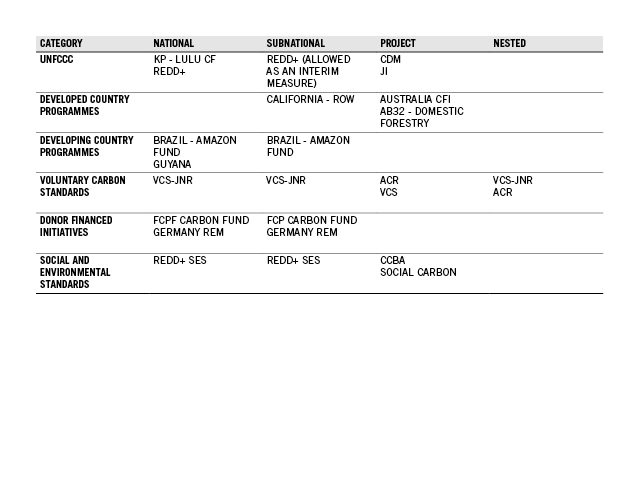Scale
Overview
For the purposes of this web page, scale is defined as the geographic area to which a standard is applied. For example, the scale might be a jurisdiction (such as an entire country or a federal state or province) or an area defined by other specified boundaries, such as an eco-region or a defined project boundary (which may, or may not, cover a significant area). The definition of “subnational approaches” has not yet been clearly defined internationally, and may refer to a large project scale (e.g. an eco-region), a program-level approach, or to a subnational administrative unit such as a state, province, or district. The term “nested” refers to mechanisms that enable implementation at multiple scales.
Under the UNFCCC, reporting of national greenhouse gas (GHG) emissions and steps taken to implement the Convention (required from all countries) as well as developed country obligations under the Kyoto Protocol are required at the national scale. The Kyoto Protocol’s Clean Development Mechanism and Joint Implementation have allowed project based (or subnational or multinational in the case of Programme of Activities) approaches to generate tradable emission reductions and removals, though JI projects are still incorporated in national accounting.
Currently, voluntary carbon standards and domestic systems that include forest-related credits as offsets have focused on project scale. The exceptions are California’s AB 32 legislation, which has provisions for future sectoral offsets that may include REDD+, and the Verified Carbon Standard -Jurisdictional and Nested REDD+ (VCS-JNR) standard. The American Carbon Registry (ACR) has published a standard for projects nested within a jurisdiction-level program.
Decisions on REDD+ under the UNFCCC to date suggest some flexibility on scale, allowing for subnational approaches as an interim step to a national level system, but no clear decisions have been made with regard to what “interim” or “subnational” mean, nor what scale will be required for results-based financing, although there is a general sense that subnational refers to a larger scale program (e.g. ecoregion) or an administrative unit. For this reason, emerging bilateral and multilateral initiatives piloting results-based REDD+ such as the World Bank’s Forest Carbon Partnership Facility (FCPF) and Germany’s REDD Early Movers Programme (REM) have focused on larger scales in anticipation of a future UNFCCC REDD+ mechanism that will require such scale.
Brazil’s Amazon Fund operates at multiple scales. While it measures performance of an ecoregion (i.e. the Amazon biome, or a subnational scale), it is managed and operated at the national level. Other emerging initiatives, such as Costa Rica’s Emission Reduction Program proposed to the FCPF Carbon Fund would be similarly implemented at a subnational (i.e. a mosaic of lands) scale, but administered by the national government. Lands across the entire country of a particular tenure type are chosen for the program. Guyana’s program, on the other hand, measures performance nationally and is managed by the national government.
Finally, most safeguard standards have been seen as complements to their voluntary emission accounting counterparts and have similarly been developed for projects. More recently, however, several standards have been developed either to be flexible with regard to scale, or specifically designed for jurisdictional (national or subnational) REDD+ programs, such as REDD+ SES.
The table below shows the scale of the different standards that are analysed on the REDD Desk.



 Twitter
Twitter Google+
Google+ Facebook
Facebook LinkedIn
LinkedIn Digg
Digg del.icio.us
del.icio.us StumbleUpon
StumbleUpon